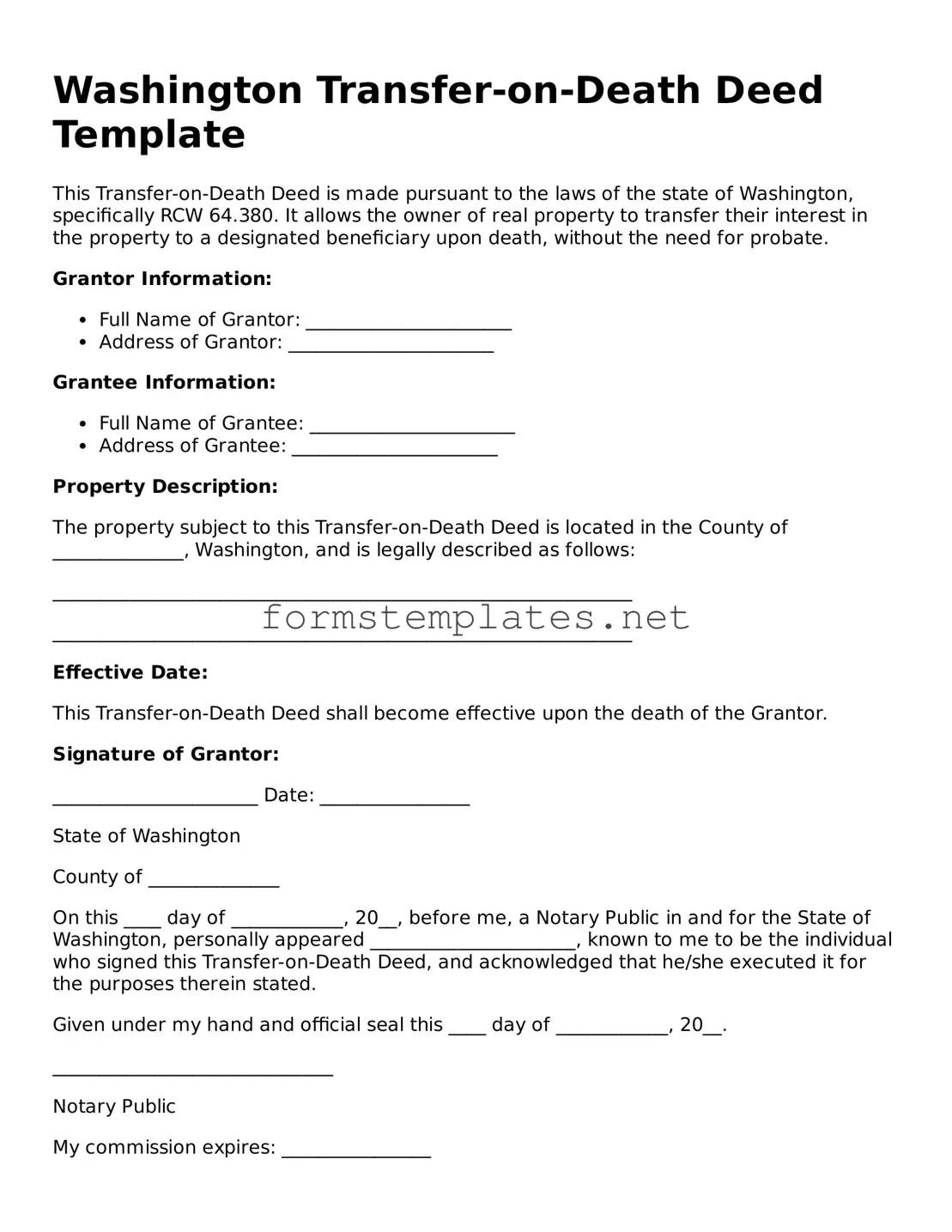Washington Transfer-on-Death Deed Template
This Transfer-on-Death Deed is made pursuant to the laws of the state of Washington, specifically RCW 64.380. It allows the owner of real property to transfer their interest in the property to a designated beneficiary upon death, without the need for probate.
Grantor Information:
- Full Name of Grantor: ______________________
- Address of Grantor: ______________________
Grantee Information:
- Full Name of Grantee: ______________________
- Address of Grantee: ______________________
Property Description:
The property subject to this Transfer-on-Death Deed is located in the County of ______________, Washington, and is legally described as follows:
______________________________________________________________
______________________________________________________________
Effective Date:
This Transfer-on-Death Deed shall become effective upon the death of the Grantor.
Signature of Grantor:
______________________ Date: ________________
State of Washington
County of ______________
On this ____ day of ____________, 20__, before me, a Notary Public in and for the State of Washington, personally appeared ______________________, known to me to be the individual who signed this Transfer-on-Death Deed, and acknowledged that he/she executed it for the purposes therein stated.
Given under my hand and official seal this ____ day of ____________, 20__.
______________________________
Notary Public
My commission expires: ________________
